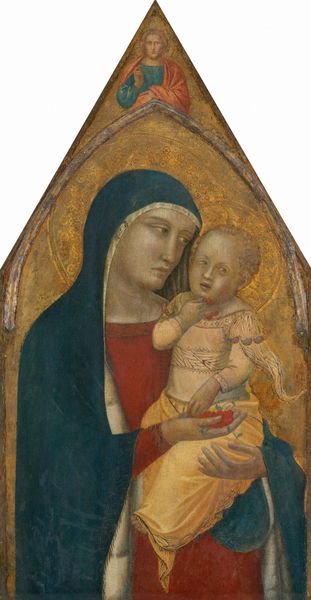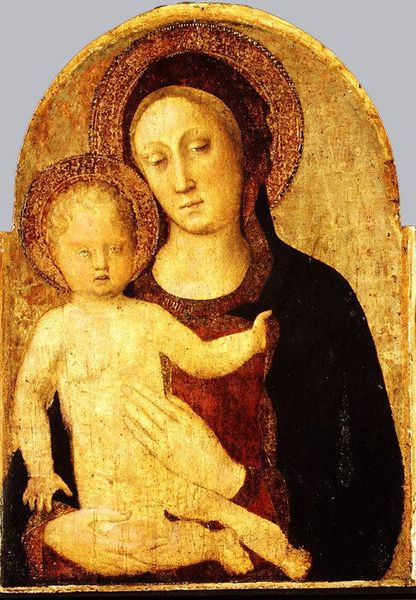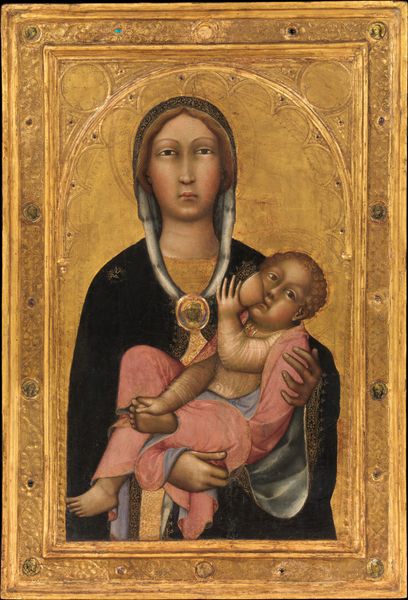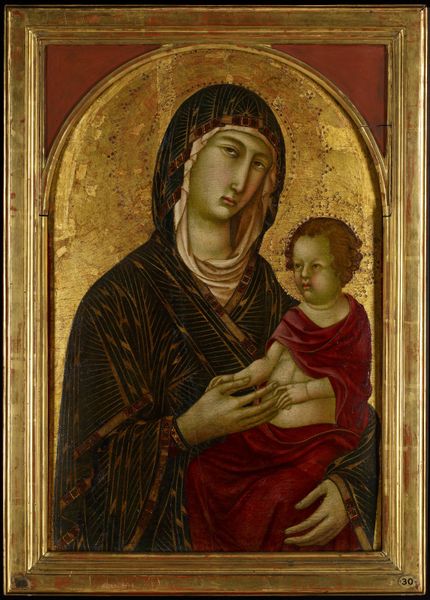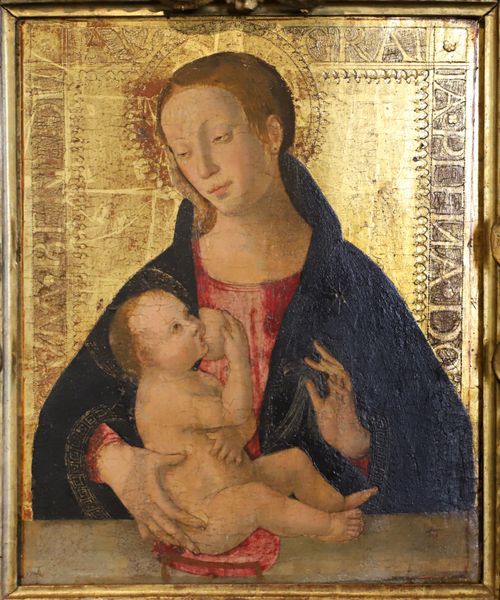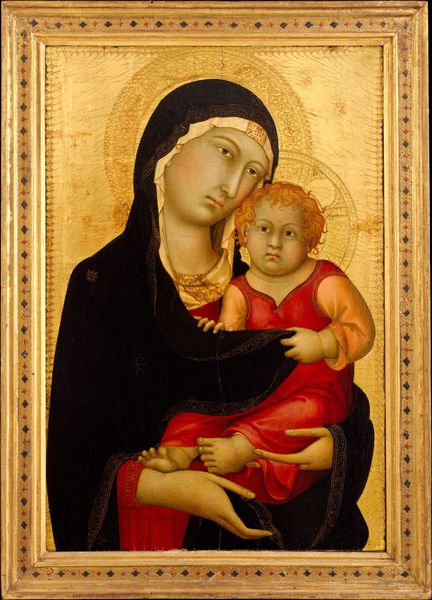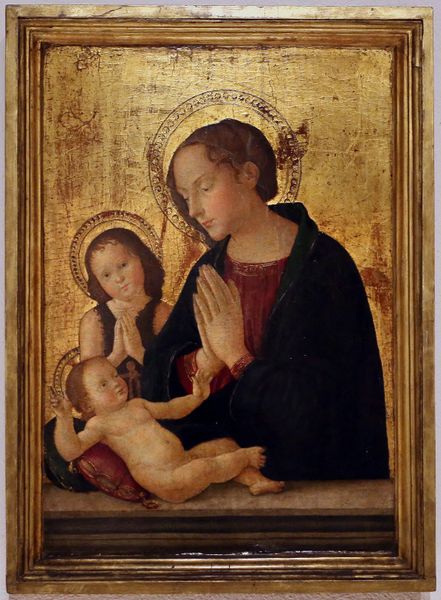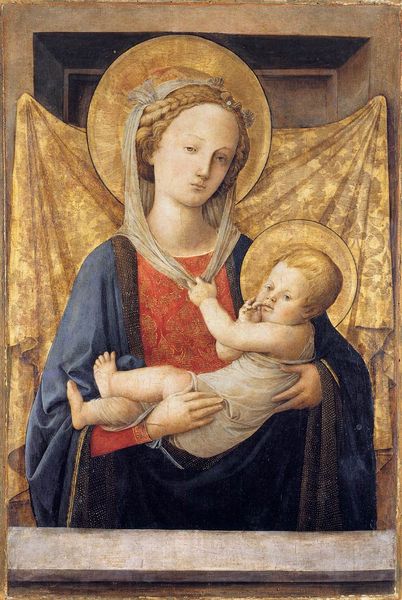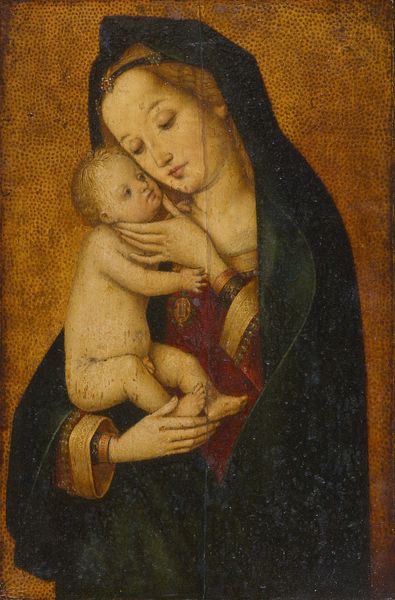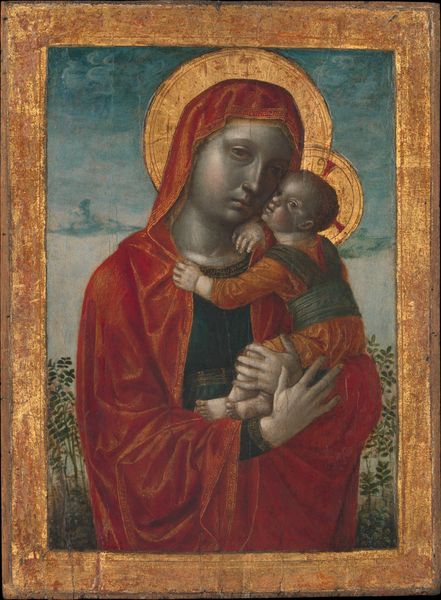
painting, oil-paint
#
portrait
#
painting
#
oil-paint
#
figuration
#
madonna
#
oil painting
#
child
#
italian-renaissance
#
early-renaissance
Dimensions: Overall, with arched top, 34 1/2 x 25 in. (87.6 x 63.5 cm); painted surface 30 1/2 x 21 3/4 in. (77.5 x 55.2 cm)
Copyright: Public Domain
Curator: This is "Madonna and Child," an oil painting by Jacopo Bellini dating from the 1440s, currently residing here at the Metropolitan Museum of Art. Editor: It has this beautiful solemn stillness to it. Almost meditative. The expressions seem to be looking inward. Curator: Absolutely. The Madonna figure itself is fascinating. Notice the dark cloak framing her face, juxtaposed against the gilded halo – visual elements placing her within both the earthly and divine realms. Bellini skillfully employs symbolism common in Renaissance religious art. The Madonna figure is iconic of motherly love and religious virtue. Editor: I see. So, beyond the obvious religious reading, does this kind of iconography carry social meaning? What role would these images play in the lives of the people of that time? Curator: Good question! Images like this shaped personal piety and belief, becoming focal points for prayer, contemplation, and the nurturing of virtue within families and communities. We mustn't forget that access to theological and moral guidance often came through visual means, in an era when literacy wasn't widespread. They reflected cultural ideals related to motherhood, spirituality, and faith itself. Editor: The painting has an honesty, almost a simplicity to it, wouldn't you agree? Curator: In many ways, it is characteristic of Early Renaissance style. It moves away from earlier Byzantine art toward a more naturalistic rendering of figures, but within a deliberately constructed symbolic framework. The halos themselves act like miniature portals, connecting the figures to centuries of artistic representations and their corresponding theological meanings. Editor: I see those historical roots rippling outwards from a central, concentrated, intimate scene of mother and child. Curator: Exactly. What may seem like a serene depiction holds centuries of cultural memory. Editor: Looking at it through the lens of social practice and popular beliefs helps decode the cultural values embedded within the painter's approach to an image we might otherwise overlook. It reminds me how art served a distinct social role. Curator: I am equally drawn to what this painting shows of the unbroken symbolic tradition connecting people of faith over time. A beautiful interplay.
Comments
No comments
Be the first to comment and join the conversation on the ultimate creative platform.
